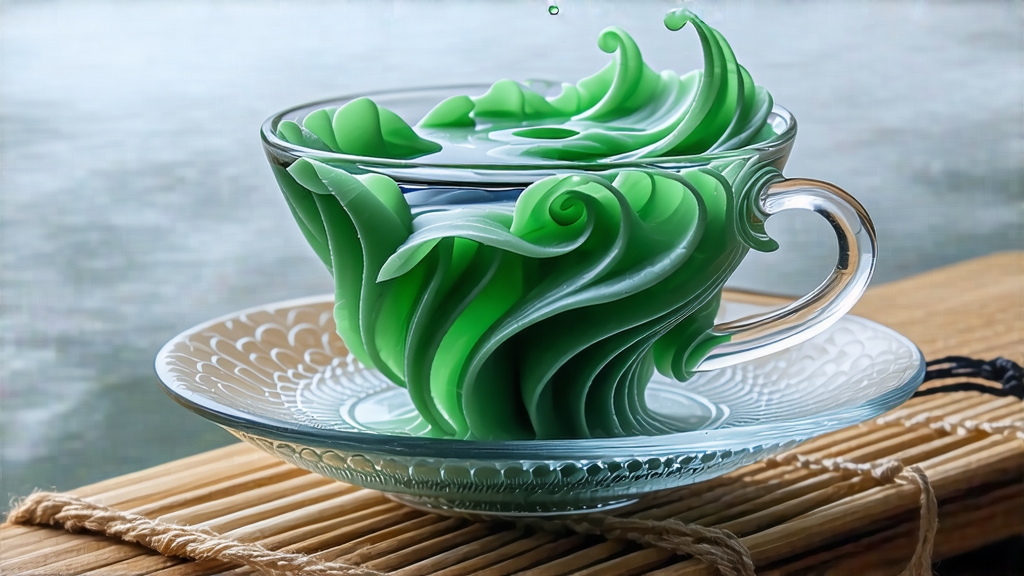
Biluochun, whose name translates literally to “Green Snail Spring,” is one of China’s ten most celebrated teas, yet it remains a quiet miracle even to many seasoned tea travelers. Grown on the mist-lapped hillsides that ring East Taihu Lake in Jiangsu Province, this emerald-green, snail-shaped green tea carries within its tiny, tightly rolled leaves the perfume of apricot blossoms, river reeds and the mineral breath of the lake itself. To understand Biluochun is to listen to a 1,200-year dialogue between monks, emperors, horticulturists and the ever-shifting Jiangnan climate; to brew it well is to coax that conversation into a single, luminous cup.
Historical whispers
The first reliably dated mention appears in the Tang dynasty’s lost monograph “Tea Classic of Shizhou” (ca. 860 CE), but legend pushes the origin further back. One spring morning in 772 CE, a nun named Lingji found a handful of jade-colored shoots growing between rocks on Dongting Mountain’s western cliff. She carried them to her cliff-side hut, pan-fired them in an iron alms bowl, and served the liquor to the traveling poet Bai Juyi. The poet, dazzled by the aroma “like a southern breeze through silk,” christened the tea “Xia Sha Ren Xiang”—“Astounding Fragrance.” The name stuck until the Kangxi Emperor, visiting Suzhou in 1699, judged the title too vulgar for imperial taste and rechristened it Biluochun, referencing both the snail-like curl and the season of first pluck. Court records show that 16 jin (8 kg) of the finest Dongting buds were shipped to Beijing each spring, packed in lead-lined bamboo cylinders cushioned with lotus leaves, arriving still cool from the lake mist.
Micro-terroir: one mountain, two sides
Authentic Biluochun comes only from the East and West Dongting Mountains that rise from Taihu like paired green fists. The lake’s 2,338 km² surface acts as a giant heat reservoir, delaying morning frost and creating nightly fogs that filter sunlight into a soft, shifting lantern. Average humidity hovers at 84 %; diurnal temperature swings can exceed 10 °C in April, concentrating amino acids in the buds. Soil is a friable, slightly acidic quartz-sandstone mixed with decaying bamboo and peach leaves, lending a whisper of stone-fruit sweetness to the leaf. Within this micro-terroir, growers recognize three ascending grades of garden: lakeside (shui wei), mid-slope (shan yao), and cliff-crest (shi bi). The highest plots, reachable only by stone staircases cut during the Ming dynasty, yield fewer than 300 g of finished tea per mu (667 m²) but produce the legendary “snow fragrance”—a cool, lactic top note compared by sommeliers to white Burgundy.
Cultivars: seeds of identity
Although Camellia sinensis var. sinensis is the biological constant, local clonal selections matter. The heirloom “Dongting群体种” (qunti zhong) is a seed-propagated landrace with 11 distinct morphotypes recognized by Suzhou Agricultural Bureau. Small, serrated leaves grow at a 55° downward angle, ideal for catching horizontal lake light. Since 1982, breeders have released F1 hybrids such as Su Cha No. 7 and Zao Bai No. 3 to extend picking season by ten days, but purists insist that only qunti zhong develops the full spectrum of linalool and geraniol compounds responsible for the tea’s signature floral lift. To protect genetic integrity, grafting rather than seeding is now prohibited within the core zone; cuttings must be traced to mother trees tagged before 1985.
Plucking choreography
The harvest window opens when 5 % of the tea bushes show the proverbial “sparrow’s tongue” bud—one unfurled leaf embracing a downy tip. In 2023 this fell on 15 March, but lunar vagarties can shift the date by two weeks. Pickers work in pairs, one clipping, one collecting, moving backward along the row so that no shadow falls on the tender shoots. Standard is one bud plus one leaf, 1.5–2.0 cm in length, weighing 0.12 g fresh. A seasoned picker gathers 600 g per hour; 70,000 such snippets create 500 g of finished tea. Leaves are deposited in shallow bamboo baskets lined with nettle